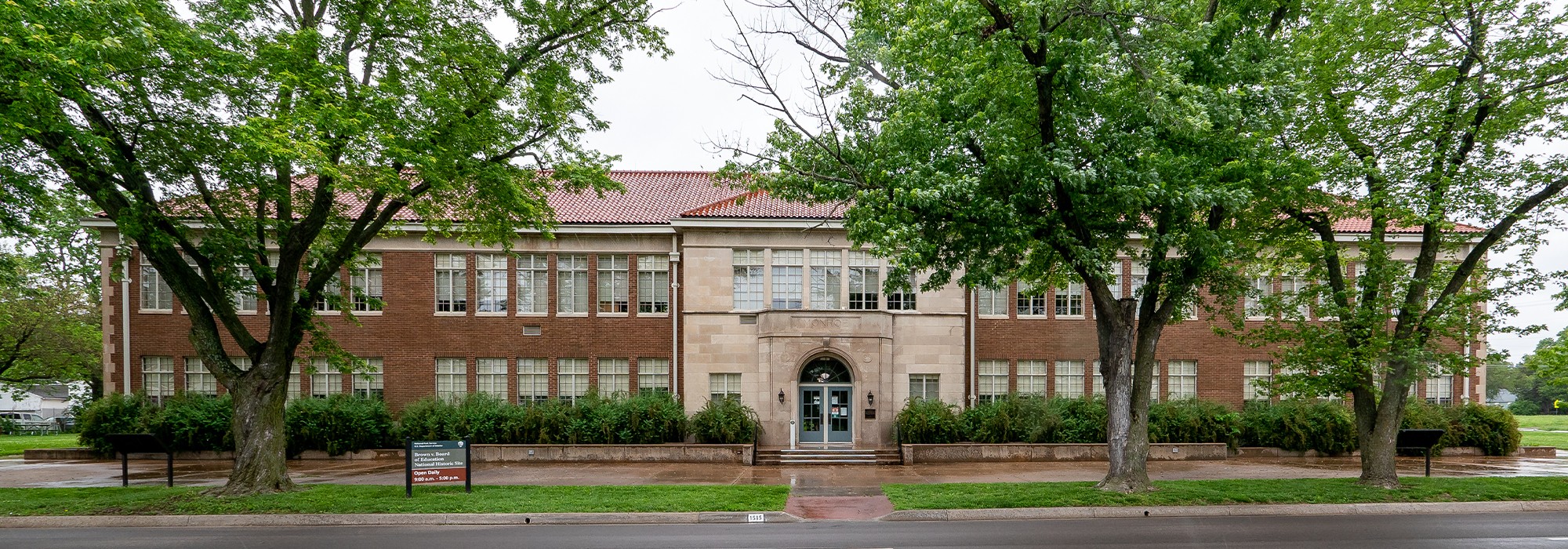Landscape Information
Located less than a mile south of downtown, this 1.85-acre site incorporates a former elementary school campus and includes two, relatively flat lots separated by the north-south oriented Monroe Street. The school was established in 1868 to serve African American children and was acquired by the city’s board of education in 1925. The board engaged architect Thomas Williamson to design a new school building, a two-story Italian Renaissance Revival structure, which opened in 1927.
In the early 1950s the school was attended by Linda Brown, who was denied enrollment in a nearby white-only school. Brown’s father filed a class-action lawsuit against the city’s board of education in 1951, which led to the landmark 1954 U.S. Supreme Court decision that upended racial segregation in public schools. Monroe Elementary School closed in 1975 due to lack of enrollment.
The structure (now a museum) is fronted by a rectilinear, concrete courtyard. The courtyard marks the museum’s primary entrance and incorporates a sidewalk that extends parallel to Monroe Street. The sidewalk and street are separated by a verge planted with an evenly spaced row of silver maple trees, planted ca. 1970. The structure is flanked to the north and south by lawns, which along with the courtyard, served as school play-areas. The eastern portion of the grounds is dominated by a lawn that hosted intramural athletic events. The lawn’s northeast corner is marked by a backstop (ca. 1950).
The property was designated a National Historic Landmark in 1991. The following year the site was listed in the National Register of Historic Places and designated a National Historic Site. The site is a part of the African American Civil Rights Network.











